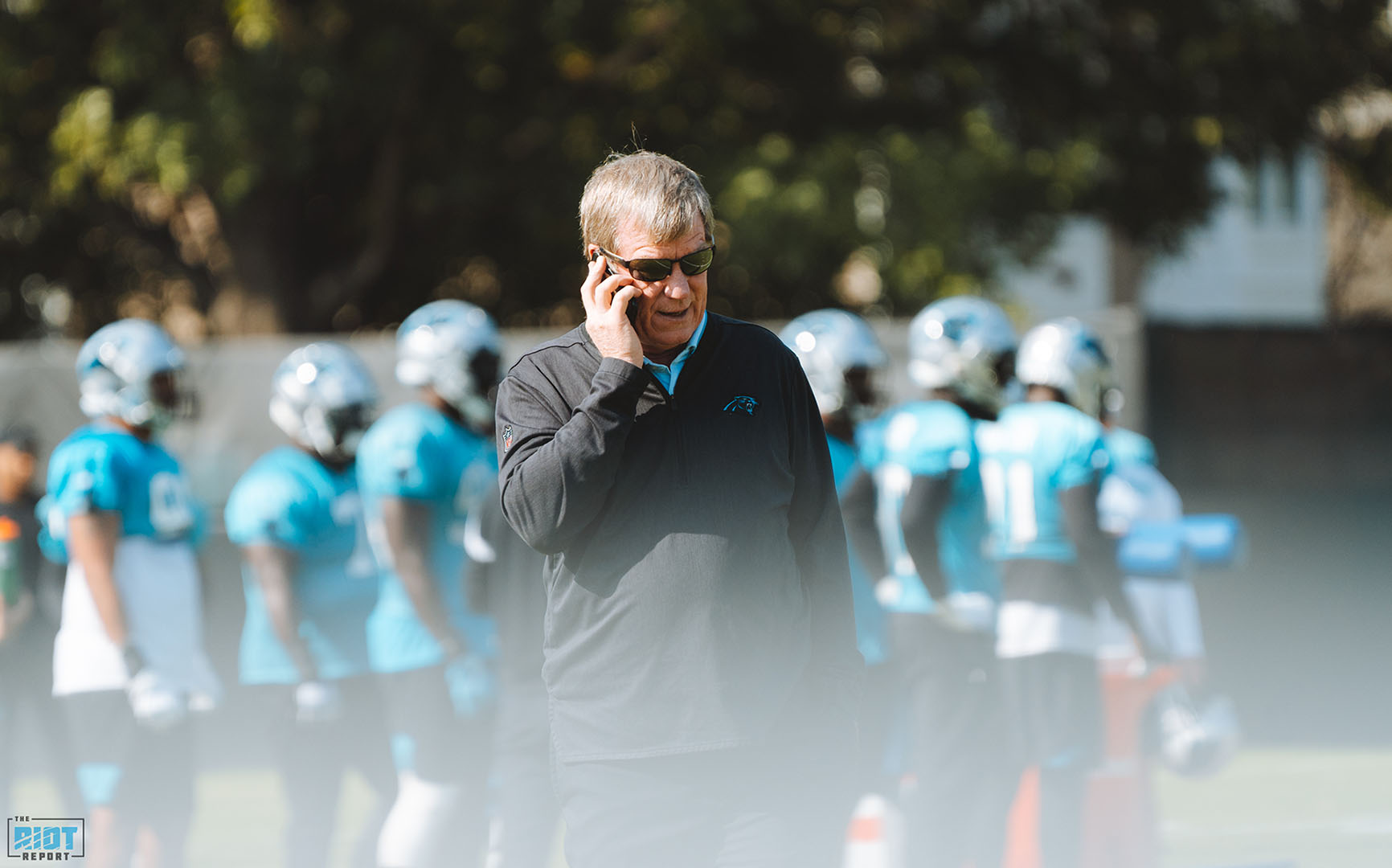The Carolina Panthers don’t have much of a history of trading down in the first round – unlike some teams in the NFL, that hasn’t been a major part of their approach historically. However, as the Panthers approach their first rebuild in a decade, there is a chance that their situation has changed somewhat, and with that, there might come a change of strategy. There are lots of arguments for trading down, some generic, some that vary based on the draft class and some that depend on each team’s specific situation.
While trading down is not always the right thing to do, there is certainly a case to be made that this is something that teams should do more, especially when they aren’t loaded with talent already.
The generic case for trading down is somewhat multi-faceted – draft strategy is to a fairly significant extent, a zero-sum game.

What this means is that the draft isn’t about getting the best possible players, it’s about getting a better set of players than everybody else. The easiest way of thinking about draft trades is that draft picks are treated like a barter commodity, with each transaction setting an individual price for any given pick. However, what is also true is that in systems of barter transactions, the value of individual goods is somewhat constrained by demand.
What this means in practice, is that while what teams will trade for the seventh pick will vary, it probably won’t vary that much. While this might all sound like something out of an economics textbook, in the context of NFL draft picks, the overall consequence is that, in every draft trade, one team overpays and one team gets the reward.
If everybody tried to trade down, nobody would be able to.
In reality, higher draft picks are comparatively overvalued by the NFL community, so by trading down, you increase the value of your overall set of assets. The analogy that is often used for this is that, because drafting is very difficult, it’s better to take multiple swings at hitting, even if you don’t have quite the same selection when you do.
Of course, there is a balance to this, and this is where we come back to the whole community bartering, as at the moment, the number of swings the Panthers can acquire is likely to out-weigh the drop-off in talent as the draft progresses.
While everybody will have their own opinion of just how strong or weak the 2020 draft class is, it does seem that there are two notable aspects of this draft class: there aren’t very many truly exceptional prospects…..but there are an awful lot of really good ones. This could work one of two ways, as if you have a chance to get one of the genuinely exceptional prospects, that is a significant increase in value compared to what they might be able to get even a few picks later. However, this also works the other way, as outside of a few elite prospects, there is little difference between prospects that might go in the middle of the first round compared to those who might go twenty or even thirty picks later.
Unless, of course, a GM falls in love with a particular prospect.
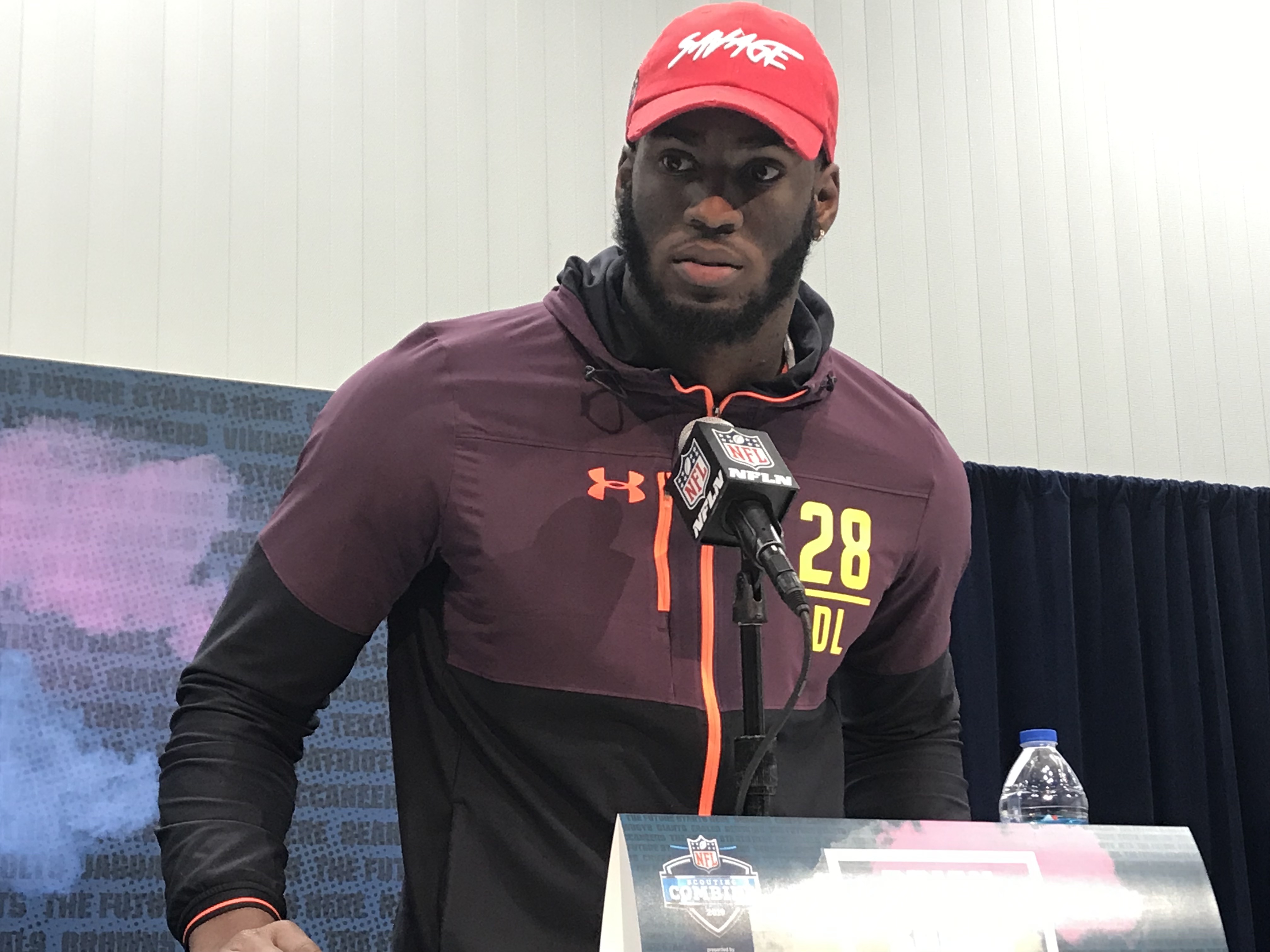
This still comes back to the fact that in order to trade down you have to find somebody who is willing to pay a suitable fee to move up, but in terms of the overall themes of this draft class, the best value in this year’s draft is likely to be had on the second day of the draft, possibly extending as far as the fourth round. While there are some players who will be very hard to pass on at the top of the first round, there looks to be a much better chance of finding a quality player throughout day two in this class than most in recent memory,
Even if trading down isn’t always the answer, it’s more likely to be the answer in 2020 than in most other years – especially for a Panthers team looking for players at multiple spots up and down the roster, from starting defensive tackle to special teamers.
This doesn’t mean, obviously, that by trading down the Panthers are able to just multiply the number of good players they get – but rather, the Panthers could probably afford to draft a dozen or more players, add a few more as UDFAs and spend the 2020 season assessing who is worth keeping moving forward while looking to fill remaining needs more strategically down the road.
For teams with only a few specific holes to fill, trading down is harder, as not only do they need to draft a player at a certain value, but also at a certain position as well. For the Panthers, it really doesn’t matter what position they draft – as long as they just keep taking the best player left on the board and don’t draft four guys at the same position, it’s less about hitting on any one individual prospect and position and more about just getting as much talent on the roster to build around going forward.
Here are a couple of scenarios that might make TOO MUCH sense come April 23:
Scenario One: The QB Shuffle
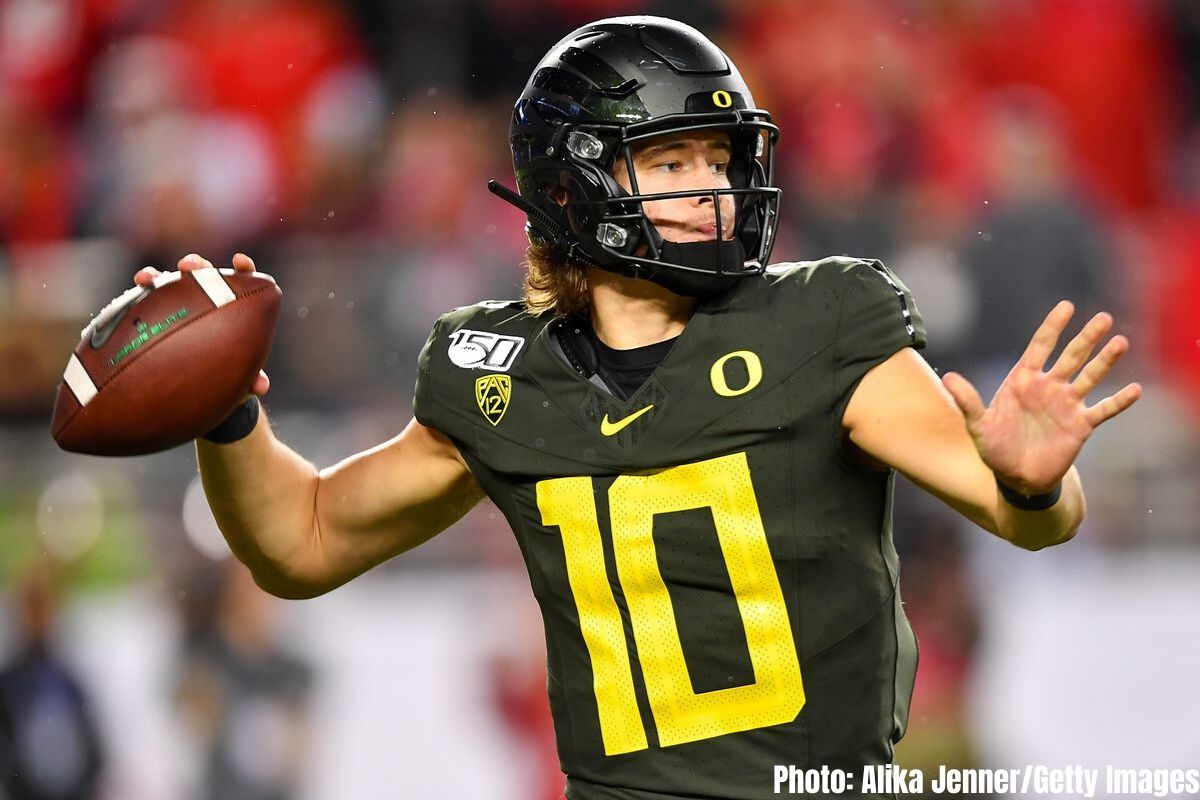
With Justin Herbert still on the board, the Panthers move down a small amount to a team looking to make sure they get the quarterback who hasn’t quite fallen to them – and to stop other teams from jumping in front of them. This would require a team close behind to be interested in a quarterback and for there to be a QB they love still on the board – but trades like this happen quite a bit. Most recently, Buffalo sent Tampa Bay two second-round picks to move up five picks and select Josh Allen in 2018.
The Move: Panthers trade the 7th Pick to Jacksonville for picks nine and 42.
Scenario Two: Kicking The Can
This is another trade that happens quite a lot, where a team doesn’t love who’s left on the board and so trades back a few picks, but without a ton of compensation as there isn’t anyone incredible to entice trade partners to move up. This is what the Bucs did in 2016, when they moved from nine to 11 and picked up a fourth-round pick. The Panthers probably wouldn’t dream of being in this situation – but if you’re looking to add mid-round picks, it wouldn’t be a bad idea.
The Move: Panthers trade the seventh pick to Las Vegas for picks 12, 80 & 121.
Scenario Three: Start Thinking 2021
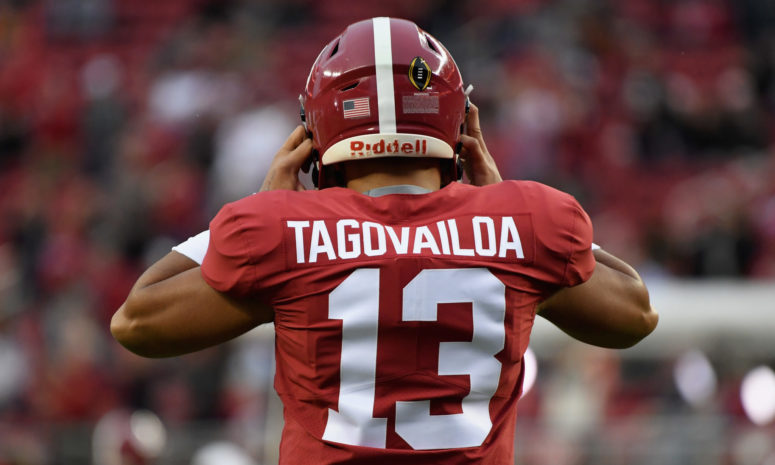
Photo Credit: Harry How/Getty Images
This is the rare occasion where a team looks to a move up from a long way back in the draft to get their quarterback, and because they don’t have the assets to do that in one year, they add in future picks to make it work. This is what the Chiefs did to get Mahomes in 2017, sending the Bills two firsts and a third for the 10th overall pick. This would require a QB to fall, but if it happens, this is likely the biggest potential reward scenario for the Panthers.
The Move: Panthers trade the seventh pick to New England for picks 23, 87, 98 and a 2021 First-Round selection
Scenario Four: All-In
Some teams have a lot of draft picks and not a lot of needs – or, at least, not as many needs as they have picks – and would likely be keen to turn a number of later picks into a top-ten selection. There aren’t a ton of examples of a team taking this attitude to the extreme of moving all the way out of a top-ten pick without major future assets, but the Panthers could always be a trend setter and look to turn their top pick into a cache of 2020 selection to give them a chance at a quick retool.
The Move: Panthers trade the seventh and 113th Picks to Miami for picks 26, 39, 56, 154 and 251
Scenario Five: The Blockbuster
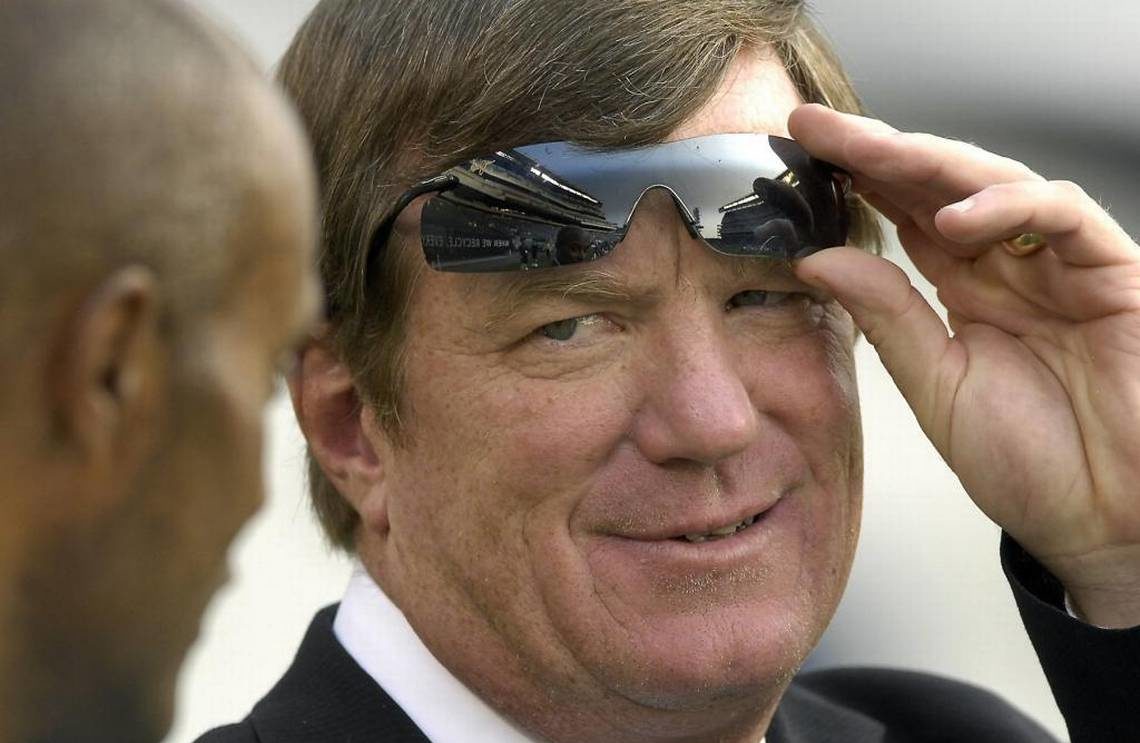
Photo: Jeff Siner/Charlotte Observer
So this is the one that all GMs probably dream about – the one where a team is willing to give you the world for a player and all you have to do is say yes. This really doesn’t happen very often for picks outside the top four, but there are examples – like when the Falcons traded for the sixth spot and Julio Jones back in 2011 and gave up two firsts, a second and two fourths. You never know, it could happen, but it requires the perfect storm of the right player being available and the right team looking to move up – it’s certainly worth keeping the phones on for.
The Move: Panthers trade the seventh pick to Baltimore for picks 28 and 60 – as well as 2021 First and Fourth-Round selections.

